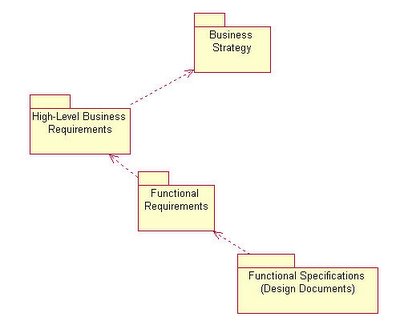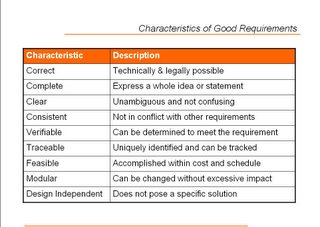The why of business analysis
 What is the role of business analysis? One might say that the goal is to help provide better solutions to meet business problems or capitalize on opportunities. Someone else may say that the goal of business analysis is to allow an organization to improve and develop. I think that the answer is more basic than that. To me, the objective is simply to communicate ideas.
What is the role of business analysis? One might say that the goal is to help provide better solutions to meet business problems or capitalize on opportunities. Someone else may say that the goal of business analysis is to allow an organization to improve and develop. I think that the answer is more basic than that. To me, the objective is simply to communicate ideas.
Eureka! The objective is to communicate
This sounds like a very easy thing to do but it really is not. First off, a business analyst must understand what business clients need. Gathering this information can be a very tedious process. Sometimes business clients are merely listing out symptoms of a problem but not the actual root cause. In other cases, clients just do not feel that they need to provide much information, "It's obvious to me, why isn't it obvious to you?"
Business clients speak in their native tongue; full of company jargon, industry jargon and obscure references. Even worse, sometimes a lack of objectivity is apparent and rose-colored glasses are used. However, through diligence and perseverance a body of requirements will take shape.
Now it is time to relay the business clients' needs to the IT groups. These groups have their own subtle nuances. IT groups also make use of their own set of terminology. Sometimes the same terminology and expressions that worked so wonderfully with the business clients leave IT groups completely dumbfounded. Have you ever seen the, "That's got to be the dumbest thing I've ever heard," facial expression? Or perhaps the, "In English please," expression? Eureka! The job is to translate!
Eureka! The job is to translate!
It is almost like a business analyst has to act as a translator; deciphering ancient Greek and translating it into modern English so it can be enjoyed by a specific audience. Perhaps that is the objective of business analysis; to translate (ensure the clear communication of ideas.)
In closing
Have you ever attended a meeting where two people saw the exact same thing, got into a heated argument about who has the correct interpretation, and you sat there stunned because they sounded like they were both arguing for the same thing?
A zebra is a white horse with black stripes. No, a zebra is a black horse with white stripes. At the end of the day, they both represent the same thing.
The two parties simply could not understand each other. They needed someone to bridge the gap. To translate and facilitate the communication of ideas.
They need a business analyst!


























